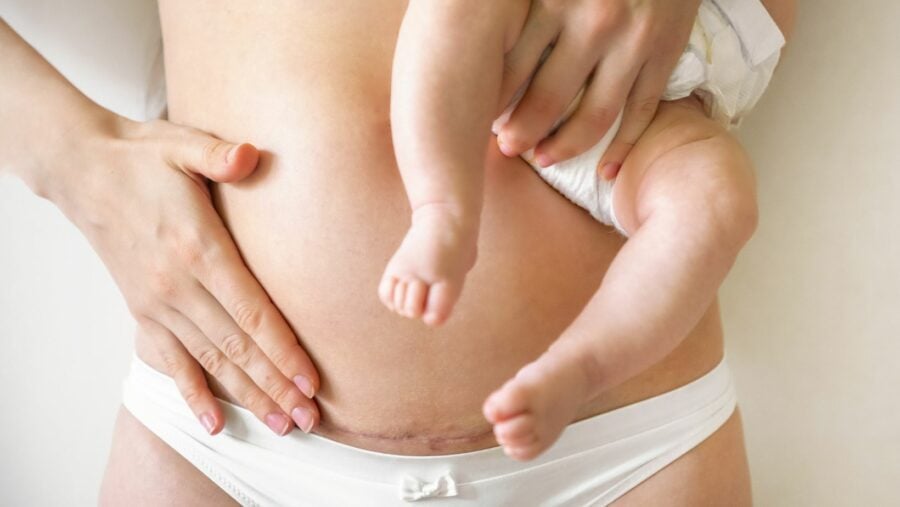Updated article January, 2024.
I will have a caesarean section in one month for my first baby, because of their transversal position in my pelvis. I was wondering what I can expect for the caesarean wound after the surgery. Can you tell me a bit more? Thanks!
A caesarean section is a surgical procedure that leaves a wound you have to care for.
The line of the wound is found under your stomach, around the pubic symphysis bone, in the upper portion of your pubic hair (mons veneris).
Depending on the doctor that performs the procedure, the wound can be closed using stitches or staples with butterfly closures placed over the top.
During the first days after childbirth, the nurse will place a dry bandage on your wound to absorb the serous liquids (physiological yellow liquid) and any pink or red blood it releases. This helps ensure the wound remains dry.
After several days, the bandage and the staples (if they were used) will be removed to allow the wound to breathe and help it heal. The butterfly closures on the two sides of the wound will remain for 1-2 weeks and will generally fall off on their own. Everything will be removed within 3-4 weeks after childbirth.
Each day you should wash the wound with soapy water then rinse it (either during your bath or shower). Then you should dry the site of the wound.
Some caregivers will suggest placing a special tape that’s sold in pharmacies to help the wound properly heal without creating a kind of “cord” at the wound site. This tape needs to be changed once a week for about a month. Creams that help heal the wound aren’t often suggested because only time heals. You can massage the wound to help reduce tugging that you may feel when you move and break up the adhesions that may form in the scar tissue behind the wound.
Another important thing to note about the wound is that it will feel different to you in and around the wound. You’ll feel numb for several months, or even a year, before the nerve endings that were cut during the surgical incision heal. So don’t worry about this during your postnatal recovery.
You will see that you will be instructed on how to move around after the surgery, and make sure that you don’t overexert yourself and open the wound. Feel free to watch my video filmed with Dr. Waddell called Caesarean deliveries, it will help you prepare for the surgery.
You can also read articles on the topic:
Marie Fortier
The Baby Expert


